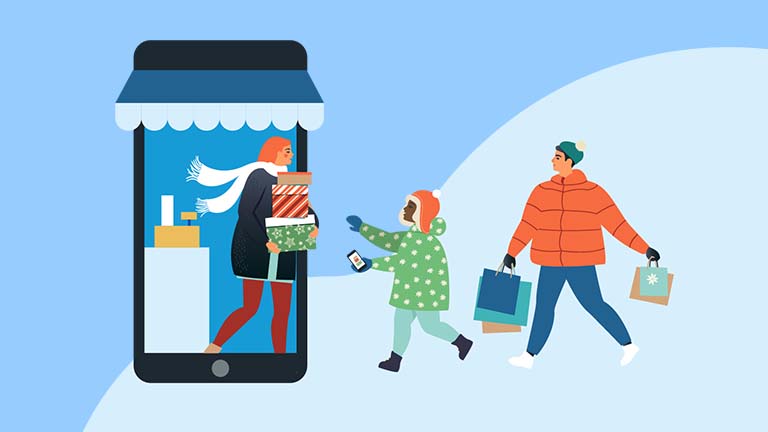Connected Shoppers Report, Fourth Edition: The Age of Unified Shopping Experiences
As the lines continue to blur between digital and physical channels, 1,600 shoppers and more than 1,000 executives reveal the new rules of consumer engagement.
Short-term solutions that brands and retailers rapidly implemented during the height of the COVID-19 pandemic have left an impact on shopper expectations.
Shoppers now have more channels and options than ever before. As the line continues to blur between physical and digital channels, shoppers expect brands and retailers to play by their rules — and they have little patience for subpar experiences. In fact, the vast majority (80%) of shoppers will abandon a retailer after three bad experiences.
Meanwhile, retail executives admit that their organisations are still playing catch-up. Between evolving their customer experience strategies and navigating an average of 44 disparate front-end technology systems, they are striving to implement a unified engagement platform that brings together data across the organisation to deliver more relevant and personalised shopper experiences.
For the Fourth Edition of the Connected Shoppers Report, we analysed the tension between shopper expectations and the state of retail today. Insights from 1,600 global shoppers and more than 1,000 retail executives reveal that:
1,600
shoppers surveyed worldwide
1,025
retail executives surveyed worldwide
Respondent Profiles
Throughout this report, we analyse trends impacting the following types of sellers:
Retailers: Companies that sell goods from multiple brands. Examples include Walmart, Woolworths, Tesco, and Carrefour.
Brands: Companies that manufacture and sell products under the same name. Examples include Nike, Apple, UNIQLO, and Samsung.
Online marketplaces: Websites that sell goods from multiple brands, retailers, and individual sellers. Examples include Amazon, Zalando, Alibaba, and Etsy.
Delivery apps: A mobile application that hires people to pick products from stores on the customer’s behalf for fast delivery or a mobile application that delivers from its own warehouses. Examples include DoorDash, Instacart, Deliveroo, and Getir.
We also examine survey results across four generations of shoppers:
Silents/Baby Boomers: born 1920–1964
Gen Xers: born 1965–1980
Millennials: born 1981–1996
Gen Zers: born 1997–2003
What you’ll find in this report
Respondent Profiles

Chapter 1: Shoppers continue to define the new rules of engagement
Shoppers quickly embraced a range of digital channels to make purchases during the pandemic. Between 2019 and 2021, three types of digital channels grew transaction share by nearly 40%: brand websites and apps, retailer websites and apps, and online marketplaces.
Emerging channels like delivery apps, social media, and messaging platforms also became serious commerce players with their share of transactions increasing more than 20%.*

Physical stores still have appeal
In that same 2019 through 2021 time period, transactions through brick-and-mortar stores decreased 27%. Over the next two years, stores are expected to rebound slightly with about 2% growth.*
While the physical store isn’t going anywhere, its role is evolving. Shoppers say they value the store for the ability to:
“Our stores are the centre of the customer journey. We are redesigning our store experience to make the journey seamless and personal, making it easy for our customers to find the products they are looking for and we want to better connect it to Pandora's DNA.”

Different destinations have different allures
Why do shoppers choose one destination over the other? Product, fulfillment, and loyalty programs all come into play.
Retailer: Shoppers are most likely to choose a retailer for returns or exchange policies and customer service. Other draws are the loyalty or rewards programs, like Target’s Circle Rewards, Tesco’s Clubcard, and Coles’ Flybuys.
Brand: Brands that embrace direct-to-consumer (D2C) selling — such as YETI, Deciem, and Bonobos — win with shoppers who seek quality, unique, or sustainable products that they may not find at a mass retailer.
Marketplace: Product variety and price are tied for the top reason shoppers choose online marketplaces. The likes of Amazon and Alibaba also stand out for diverse fulfillment options, including same-day, next-day, and two-day shipping.
Delivery app: The overwhelming reason shoppers choose this channel is for speed of delivery. Consider the traction of apps like Getir, Gorillas, and JOKR, which offer grocery delivery in 15 minutes or less.
Top 3 reasons for shopping on different channels

Spotlight on the growing complexity of the shopping journey

- Discovery at the edge: Social media, influencers, and messaging apps are the most popular methods for discovery. Gen Zers turn to social media (64%) and influencers (41%) in greater numbers than other generations to discover brands and retailers.
- Buying at the edge: Mobile wallets, email, and social media are the top digital destinations for shoppers to make a purchase. An example of buying at the edge is Instagram Checkout, a social commerce platform that creates an end-to-end shopping experience on the app.
- Service at the edge: Self-service channels (chatbots, chat, instant messaging) and social media are the most popular ways to engage customer service. The younger the shopper, the greater the willingness to use these kinds of digital channels.

Chapter 2: Loyalty is the new brand differentiator

More Resources

State of the Connected Customer

Digital Trends Report
















